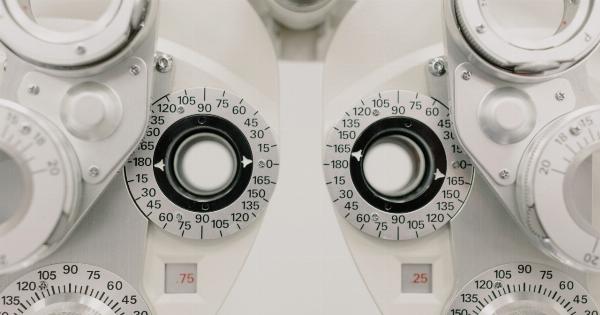The human body is an intricate system of interdependent organs and tissues, which works together to perform various functions. Each part of the body indicates specific signs and symbols that help in revealing the overall health status of a person.
While we all tend to focus more on external health, the condition of the internal organs and systems also play a crucial role in maintaining overall well-being. There is a specific vital body point that reveals much about the health status of a person.
This article will discuss in detail about the body point that reveals your health status and its relevance in determining any underlying medical conditions. Read on to find out more.
The Tongue
Believe it or not, the tongue can reveal a lot about a person’s health. It is a crucial diagnostic tool used in traditional Chinese medicine, also known as TCM.
TCM practitioners analyze the tongue’s appearance, including its color, shape, texture, and coating, to detect internal health problems.
Tongue Color
Tongue color is an essential indicator of a person’s overall health status. A healthy tongue is typically pink and has a thin white coating.
If the coating turns yellowish or becomes thick, it could indicate a fungal or yeast infection, an underlying bacterial infection, or liver or gallbladder problems. A red tongue indicates inflammation, while a white tongue indicates a digestive problem.
Tongue Shape
The tongue’s shape can help detect an underlying health issue. A swollen or enlarged tongue could occur due to an allergic reaction, thyroid disorder, or a vitamin B deficiency. A scalloped tongue could indicate sleep apnea or a digestive problem.
A thin or skinny tongue could indicate dehydration, malnourishment, or depression.
Tongue Texture
The texture of the tongue is another vital factor that practitioners inspect to determine a person’s health status. A smooth and shiny tongue is an indication of vitamin B12 deficiency, anemia, or iron deficiency.
A fissured tongue, which has grooves or cracks, could indicate oral thrush, dehydration, or an autoimmune disease.
The Eyes
The eyes are commonly referred to as the windows to our soul, but they also play a role in revealing our health status. A simple eye examination can help detect underlying medical conditions that aren’t visible externally.
A comprehensive eye exam includes a tonometry test, a glaucoma test, a visual acuity test, and other tests that help in determining eye health.
Discoloration and Yellowing of Eyes
The whites of the eyes are typically white, but if they turn yellow, they could indicate liver or gallbladder problems. If the eye whites become red, it could indicate conjunctivitis, dryness, or allergies.
An uneven colored iris could indicate underlying health issues.
Bulging or Puffy Eyes
Bulging or puffy eyes indicate water retention, which occurs due to several reasons like allergies, dehydration, high salt intake, or an underlying health condition like Thyroid Eye Disease.
Eye Pain or Irritation
If you experience eye pain or irritation, it could indicate an eye infection, inflammation, or a foreign object in the eye.
The Skin
Our skin is the largest organ in our body, and it reveals a lot about our overall health status. A healthy and glowing skin indicates proper hydration, adequate nutrition, and general well-being.
On the other hand, a dull or discolored skin could indicate underlying health conditions.
Changes in Skin Color
Changes in skin color could indicate an underlying health condition. For instance, if the skin develops a yellow tint, it could indicate liver or gallbladder issues.
If the skin turns blue or purple, it could indicate circulatory problems, such as poor blood circulation.
Acne
Acne on the skin is a common problem that could indicate an underlying hormonal imbalance or sensitivity to certain foods. Acne could also occur due to the accumulation of bacteria on the skin.
Wrinkles or Fine Lines
Wrinkles or fine lines on the skin could indicate aging or photo-damage due to excessive sun exposure. Wrinkles or fine lines could also occur due to dehydration, smoking, or a lack of adequate nutrition.
The Nails
The nails are often overlooked when it comes to detecting health problems. Still, several nail problems indicate underlying medical conditions.
Discoloration of Nails
If the nails turn yellow or brown, it could indicate a fungal infection or an underlying autoimmune condition like psoriasis or eczema. If the nails turn blue or purple, it could indicate a lung or circulatory problem.
Ridged or Pitted Nails
If the nails become ridged or pitted, it could be an indication of a dermatological condition like psoriasis or eczema.
Brittle Nails
Brittle nails could occur due to dehydration or iron deficiency. Brittle nails could also occur due to prolonged exposure to chemicals or hand hygiene products like sanitizers.
The Ears
The ears are an essential organ that performs a crucial function in our daily lives. They also provide subtle signs that could indicate underlying health problems.
Earwax
Earwax is a substance that forms in the ear canal, which helps lubricate the ear. Overproduction of earwax could block the ear canal, leading to problems in hearing.
Ringing in the Ears
Ringing in the ears or tinnitus could indicate underlying hearing problems or an infection.
Ear Infections
Ear infections could occur due to various reasons, including an accumulation of fluid in the ear canal, injury to the ear, or the presence of a foreign object in the ear.
Ear infections could indicate an underlying medical condition like allergies, a cold, or a respiratory infection.
The Conclusion
Our body is a complex organism that reveals subtle signs of underlying medical conditions. The body points mentioned above indicate the overall health status of a person.
It is essential to pay attention to our body’s signals and seek medical attention if necessary. Regular check-ups and medical screenings could help detect underlying medical conditions early and promote overall well-being.





























